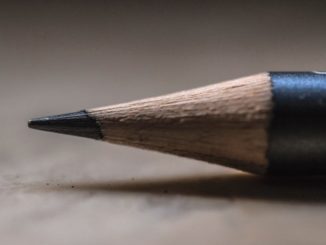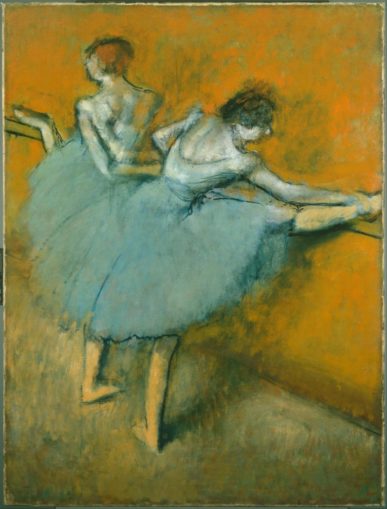
In part two of this series I’d like to introduce the joys and messiness of drawing with soft pastels. The pastels I use are chalk based, although some are oil-based and therefore more like crayons. Probably the best proponent of art with pastels was Edgar Degas who drew exquisite pastel drawings of ballet dancers and prints of his works fill the shops.
Pastels can be quite expensive for the best-quality soft ones that leave a clear mark on the paper, but there are cheaper ones that come in sets from outlets such as The Range and many others. The cheaper the pastel, such as those that can be bought in sets, the more difficult they are to use. I would recommend starting with the cheap ones, so that you discover how they cover and adhere to the paper. The paper is fairly cheap and can come in A4 pads of different colours and textures. Pastels are also useful for weathering models such as armoured fighting vehicles and dry brushing a model with pastels simulates convincing dust. The stark black undersides of models of British bombers, can be toned down with a dusting of pastel Payne’s grey. I’m still struggling to get a grip of pastels, so bear with me. The set I’m using consisting of paper, pastels and drawing pencils came in at under £25.
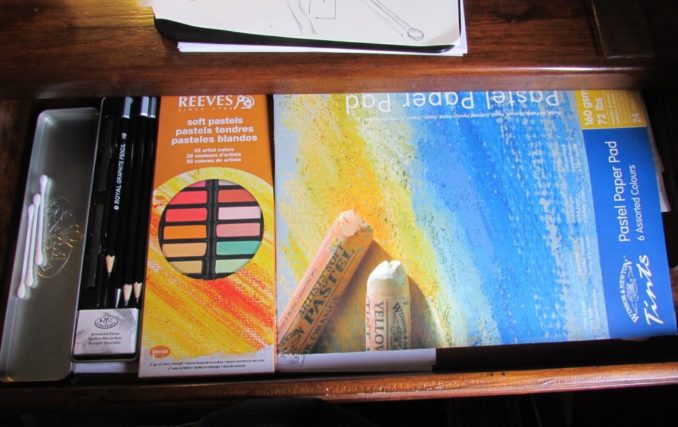
For this picture I chose a well-known seabird of the Fratercula family. They seem to be rather popular here, so I thought I would do a homage to this curiously likeable, little bird. I chose a sheet of the blue-grey paper as it complimented the subject. Unlike watercolours, there is no paper prep required and you can just crack on. The paper was clipped to my drawing board and I laid down a quick preliminary sketch in a 2B pencil, but you can use charcoal as this compliments the pastels. If you want a softer texture to the picture, pad underneath your pastel paper with newspaper.
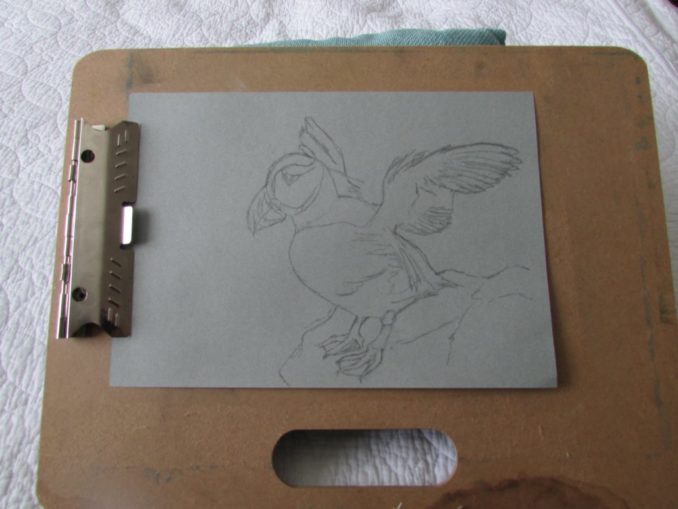
After drawing the subject, put down a gentle dusting of the background colour, making sure you don’t press down too hard. This gives you markers for the bird and starts to lift the picture. Pastels can be blended with your fingers or a cotton bud, (but please think about Sky’s Ocean Rescue first) and there are two schools of thought, depending on which style you prefer. Some pastel purists say they should never be rubbed in or blended. In fact this is almost impossible with oil-based pastels. But once again, it’s your picture, you’re doing it because you want to and if it looks good to you, who can argue? If you go over an area you don’t want the colour, lift it with a putty rubber using a blotting action.
Some people prefer to work back to front, others top to bottom. The reason being that your arm may smudge the pastels you’ve already laid down. An easel may help. Now start to build up the colours in blocks. This is messy, so have a cloth handy and keep washing your hands, otherwise it’ll go everywhere, thus evoking the considerable wrath of Madame Periphery. Working on a painter’s dust sheet can help as well. I’ve continued on the bird’s wings and the rock with the lichen

At this stage you can think about completing the drawing, adding the details. You can fix whatever’s already been laid on the paper with pastel spray fix, but it’s expensive. Because I’m no Degas, I use hairspray. Unfortunately it’s impossible to find Cossack hair spray to compliment my Faberge West aftershave Cologne, so I use cheap stuff from Tesco. Now finish off the drawing with the vibrant colours and when you’re happy, fix it with the hair spray. Don’t use too much otherwise you will dull the colours.

As you can see, I’m no Peter Scott, but it passed a Sunday afternoon waiting for the next storm to come in. Good luck
© Chris Downes AKA Blown Periphery 2023
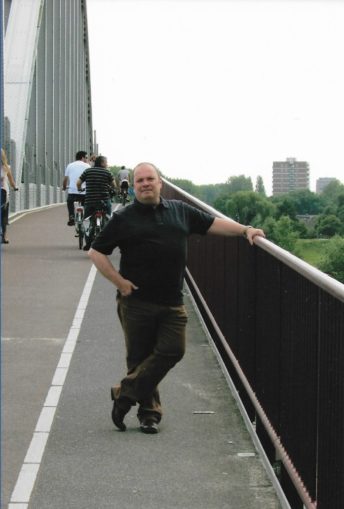
Christophe Downes 28th July 1957 – 30th March 2023



